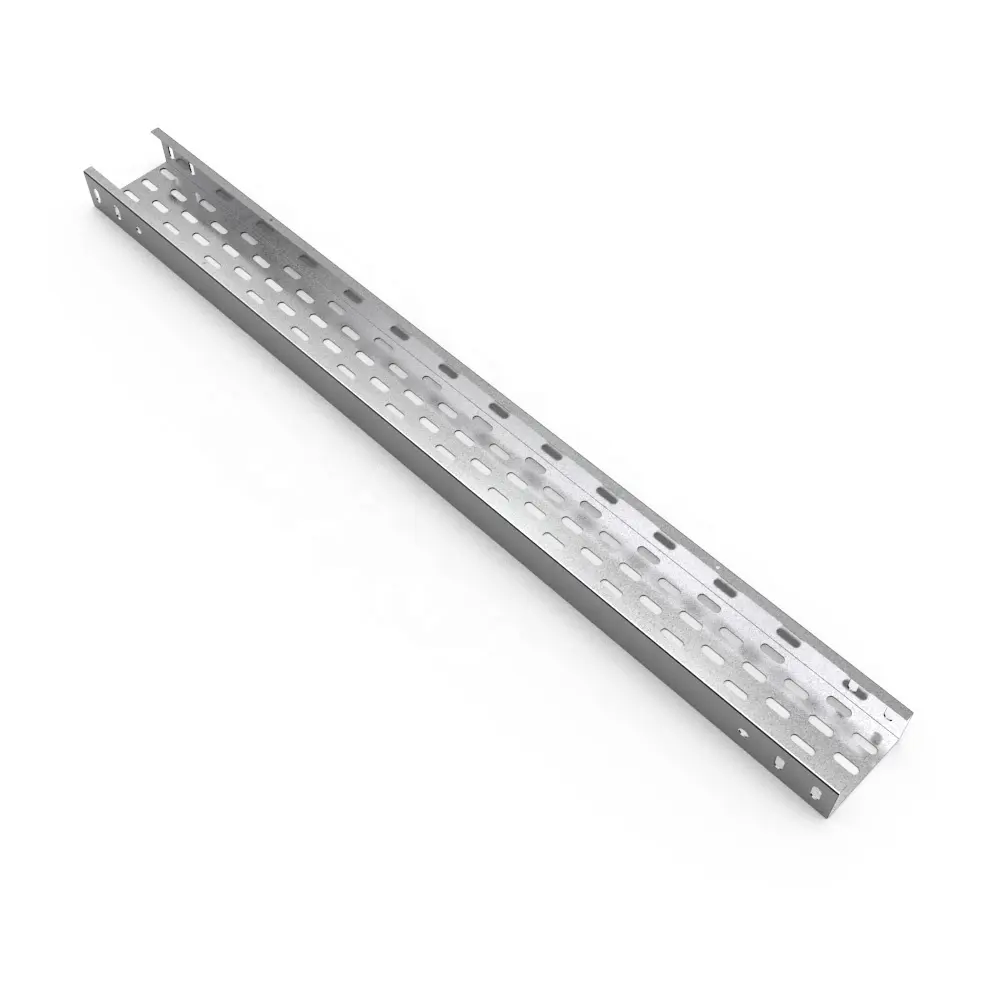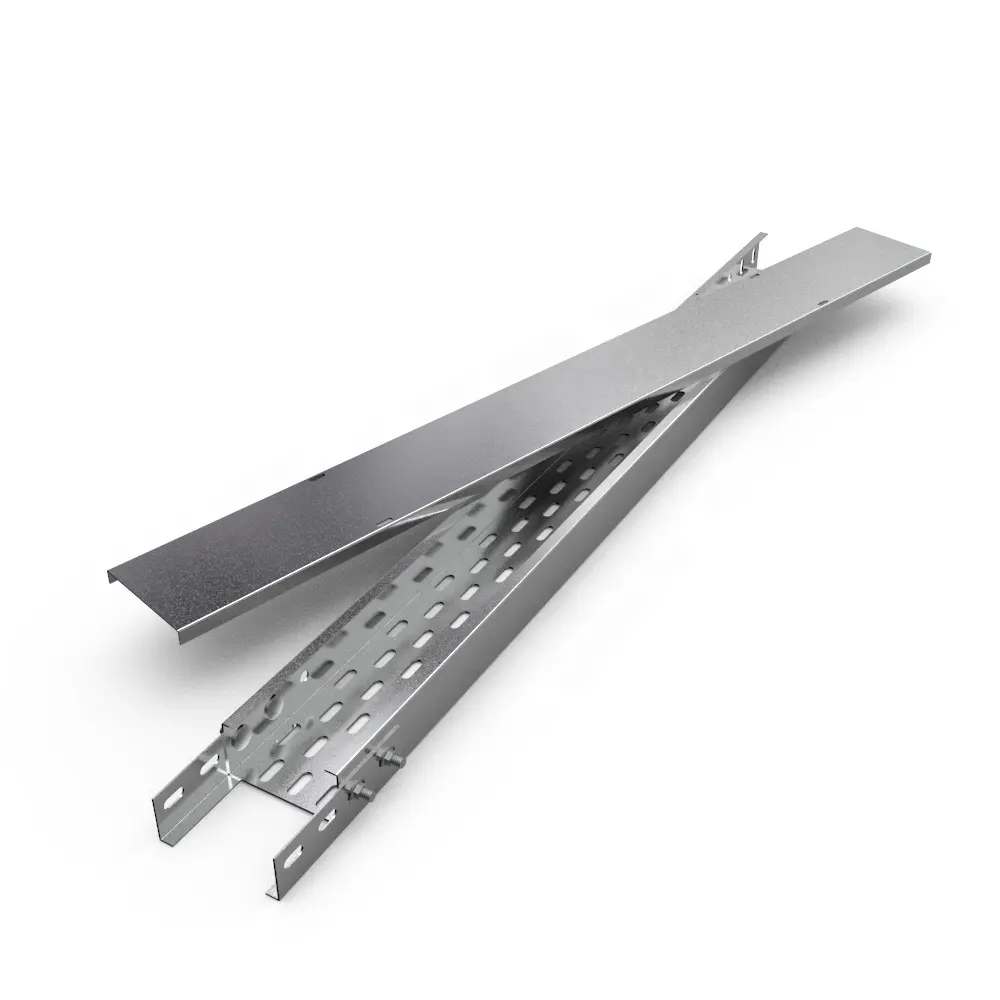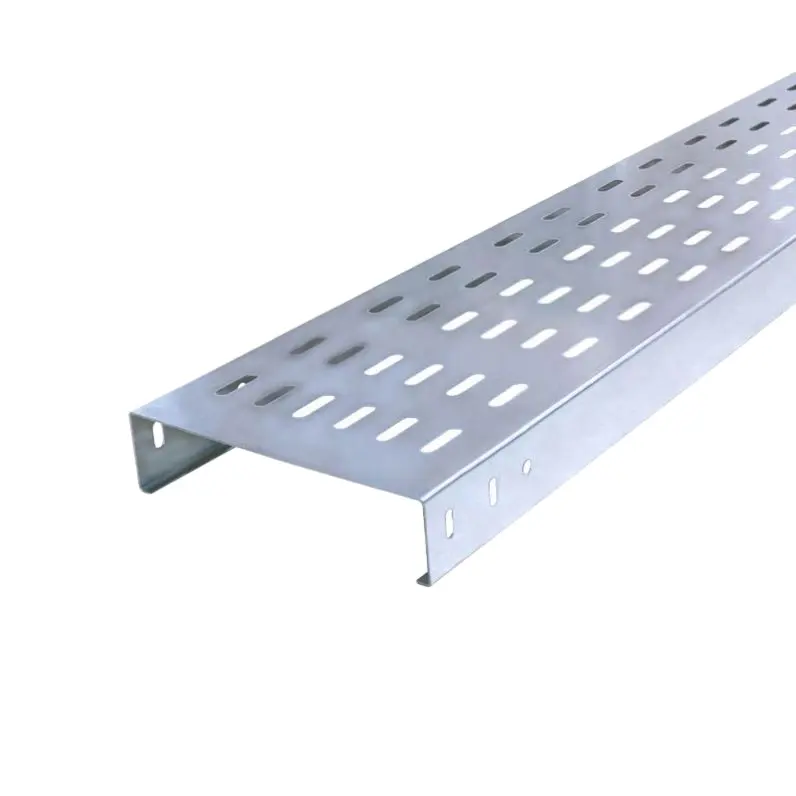Electrical safety is an indispensable aspect of any infrastructure or facility that utilizes electrical cables, especially in outdoor environments where cables are exposed to various hazards such as weather elements, mechanical stress, and potential human interference. Outdoor cable trays play a vital role in safeguarding electrical systems by providing organized, protected, and accessible pathways for cables. In this extensive and detailed article, we will delve deeply into the key aspects of ensuring electrical safety with outdoor cable trays, covering their design, installation, maintenance, regulatory compliance, and advanced considerations.
1. Choosing the Right Outdoor Cable Tray Material:
The material selection for outdoor cable trays significantly impacts their electrical safety. Common materials include galvanized steel, stainless steel, aluminum, and fiber-reinforced plastic (FRP). Each material offers unique advantages and disadvantages in terms of corrosion resistance, durability, conductivity, and cost.
When selecting a material, consider factors such as the environmental conditions, expected lifespan, required level of electrical insulation, and potential exposure to chemicals or corrosive substances. Additionally, assess the compatibility of the chosen material with the specific cables and connectors used in your system.

2. Proper Grounding and Bonding Techniques:
Proper grounding and bonding are essential components of electrical safety in outdoor cable tray systems. Grounding ensures that any stray electrical currents are safely dissipated into the earth, preventing electrical shocks and fires. Bonding connects metallic parts of the cable tray system, creating a low-resistance path for fault currents.
To ensure electrical safety, follow applicable codes and standards, such as the National Electrical Code (NEC) and International Electrotechnical Commission (IEC), when designing and installing grounding and bonding systems. Verify the continuity and integrity of these connections over time.
3. Adequate Clearance and Spacing Requirements:
Maintaining adequate clearance and spacing between cables and other conductive materials is crucial for electrical safety. Overlapping or excessively close proximity of cables can lead to overheating, short circuits, and even fires. Follow NEC and IEC guidelines for minimum clearance and spacing requirements based on the voltage levels, environmental conditions, and the type of cables being used.
Consider temperature rise, cable ampacity, and nearby heat sources when determining the appropriate clearance and spacing for your outdoor cable tray system. Ensure that cable trays are installed at a safe distance from flammable materials and sources of ignition.
4. Cable Tray Design and Configuration Best Practices:
The design and configuration of outdoor cable trays should prioritize electrical safety, efficiency, and ease of maintenance. Choose a tray system that allows for proper cable support, prevents sagging, and facilitates easy access for maintenance and inspections. Ladder-type trays, wire mesh trays, and solid bottom trays are popular options, each offering different levels of support and protection.
Consider the following design and configuration best practices:

Route cables vertically or horizontally in a neat and orderly manner within the tray.
Use additional accessories like cable ties, J-hooks, and supports to secure cables and prevent movement or damage.
Plan for expansion or modifications by selecting modular cable tray systems that can be easily reconfigured or extended.
Incorporate firestops and penetration seals where cable trays pass through walls, floors, or ceilings to prevent the spread of flames and smoke.
5. Advanced Weatherproofing and Protection Strategies:
Outdoor cable trays must be designed to withstand harsh environmental conditions, including rain, humidity, extreme temperatures, UV radiation, and exposure to chemicals or pollutants. To enhance electrical safety, employ advanced weatherproofing and protection strategies, such as:
Use specialized coatings and finishes that provide additional corrosion resistance and UV protection.
Install weather-resistant covers, gaskets, and seals to protect cable connections, splices, and terminations from moisture and contaminants.
Implement thermal management solutions, such as heat-dissipating materials or cooling systems, to prevent overheating in high-density cable installations.
Employ shielding or isolation techniques to minimize electromagnetic interference (EMI) and radio frequency interference (RFI).
6. Regular Maintenance and Inspections:
To maintain electrical safety, it is essential to conduct regular maintenance and inspections of outdoor cable trays. This includes checking for signs of wear, damage, or corrosion; verifying the integrity of grounding and bonding connections; and ensuring that cables are properly supported and spaced within the tray.
Implement a preventive maintenance program that includes scheduled inspections, cleaning, lubrication, and repairs as needed. Document all maintenance activities and use predictive maintenance techniques, such as thermography or vibration analysis, to identify potential issues before they become critical.
7. Compliance with Electrical Codes and Standards:
Adhering to electrical codes and standards is vital for ensuring electrical safety with outdoor cable trays. Familiarize yourself with relevant regulations, such as the NEC, IEC, and local building codes, and ensure that your cable tray system complies with these requirements.
Engage qualified professionals, such as electrical engineers and licensed electricians, to design, install, and inspect your outdoor cable tray system. Stay updated on changes to codes and standards and conduct periodic reviews to ensure ongoing compliance.
8. Training and Awareness Programs:
Educate personnel who work with or near outdoor cable trays about electrical safety best practices, including proper handling of cables, recognizing potential hazards, and reporting any issues or concerns. Provide training on the use of personal protective equipment (PPE) and emergency response procedures in case of electrical accidents or incidents.
Develop and implement comprehensive training programs that cover topics such as electrical theory, cable tray system components, installation techniques, and troubleshooting methods. Regularly update and refresh these programs to reflect changes in technology, regulations, or industry best practices.
9. Risk Assessment and Mitigation Strategies:
Conduct thorough risk assessments to identify potential electrical hazards associated with outdoor cable trays. Evaluate factors such as environmental conditions, cable loading, the condition of the cable tray system, and human factors like operator error or unauthorized access.

Develop and implement mitigation strategies to address identified risks, such as upgrading cable tray materials, improving grounding and bonding, enhancing weatherproofing measures, or implementing stricter access control procedures. Continuously monitor and reassess risks to ensure that mitigation strategies remain effective.
10. Documentation and Record-Keeping:
Maintain accurate and up-to-date documentation of your outdoor cable tray system, including design drawings, installation records, inspection reports, maintenance logs, and test results. This information is invaluable for ensuring electrical safety, demonstrating compliance with regulations, and facilitating troubleshooting and repair activities.
Use digital tools and software to streamline documentation processes, improve data accuracy, and facilitate collaboration among team members. Implement a document control system that ensures version control, access control, and backup procedures are in place.
Conclusion:
Ensuring electrical safety with outdoor cable trays requires a holistic approach that encompasses material selection, grounding and bonding, clearance and spacing, tray design, weatherproofing, maintenance, compliance with codes and standards, training, risk assessment, and documentation. By implementing these best practices and staying vigilant about emerging trends and technologies, facilities can minimize the risk of electrical accidents, protect personnel and equipment, and maintain the reliability and efficiency of their electrical systems. Outdoor cable trays are a critical component of electrical safety in various industries, and investing in their proper design, installation, and maintenance is essential for fostering a safe and productive work environment.

